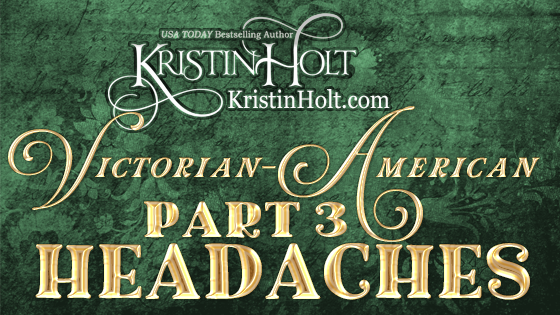
by Kristin Holt | Oct 16, 2019 | Articles
Part 4 of an 11-part series: Victorian-American Headaches. Explore five decades’ worth of advertisements for various headache remedies. Powders, capsules, tablets, beverages, and pills. Apparently remedies were gaining traction and becoming popular–though none of them contained a 19th-century chemistry breakthrough–Aspirin.

by Kristin Holt | Sep 12, 2019 | Articles
Victorian-American Headaches: Part 3 continues the 11-part series, adding to two other doctors’ perspectives, opinions, and attitudes about headaches. This 1893 newspaper article explains types of headaches, and the doctor’s urging to mothers and nurses to protect babies’ eyes. He not only mentions headache “specifics”, but he sheds much light on antipyrin, a development that made a big splash in the waters of headache management, circa 1888. Scientists developed the precursors to acetaminophen, aspirin, etc., and use of their remedies exploded. The good doctor explains the urgency of patients in obeying their doctor’s instructions and “taking their prescriptions.”

by Kristin Holt | Jan 24, 2019 | Articles
Today, January 24th, is the United States’ National Peanut Butter Day. On March 1st, calendars declare the day National Peanut Butter Lover’s Day.
Who first invented peanut butter? Doctors worried about elderly patients’ nutrition, right? Sometime in the nineteenth century?
Uh, no. Not exactly.
But peanut butter–an “All American” spread–was enjoyed by our Victorian-American ancestors. Read vintage articles instructing knowledgeable housewives of the many dietary uses of the peanut, vintage recipes instructing the proper making of “peanut paste”, the inclusion of pulverized peanut (paste, flour, finely chopped), and ultimately, advertised brands to buy at their grocers’ markets.











